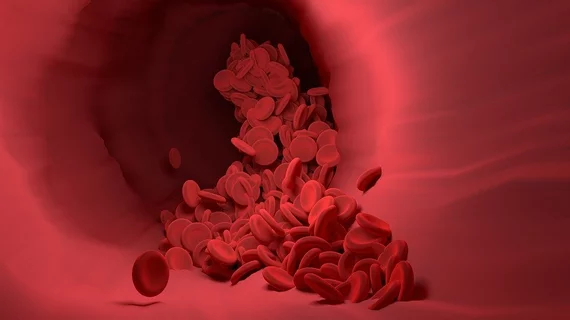Machine learning-powered imaging platform pinpoints subtle differences in blood clots
A rapid imaging approach, combined with the computing power of artificial intelligence, is changing the way physicians diagnose and treat blood clots.
Researchers from Japan developed a new method—the intelligent platelet aggregate classifier (iPAC)—that uses a high-throughput imaging process to capture thousands of various blood clot images. And while manually analyzing these scans for differences would typically be near impossible, the group used a convolutional neural network to identify key distinctions in their makeup.
Senior author of the study Keisuke Goda and colleagues tested their method in human blood samples, publishing the positive results May 12 in eLife.
"Using this new tool may uncover the characteristics of different types of clots that were previously unrecognized by humans, and enable the diagnosis of clots caused by combinations of clotting agents," Goda, also a professor at the University of Tokyo’s Department of Chemistry, said in a statement. "Information about the causes of clots can help researchers and medical doctors evaluate the effectiveness of anti-clotting drugs and choose the right treatment, or combination of treatments, for a particular patient."
Blood clots have positive benefits, such as stopping a bleeding cut, but when platelets cluster together they can also cause a stroke or heart attack. Armed with insight into what caused a blockage, physicians may be able to determine if aspirin, for example, or another type of drug would be most effective.
Goda and colleagues trained their convolutional neural network to identify small variations in the shape of various types of clots caused by different molecules. And when tested on 25,000 images, it accurately classified a majority of them.
After establishing the accuracy of their machine learning approach, the group took blood samples from four healthy patients, exposed them to multiple clotting agents and proved the iPAC could distinguish one clot from another.
“We showed that iPAC is a powerful tool for studying the underlying mechanism of clot formation," said lead author Yuqi Zhou, a PhD student at the University of Tokyo.
Zhou also noted that the platform may ultimately be harnessed in certain COVID-19 cases, given reports that some individuals suffer from blood clots after being infected.

